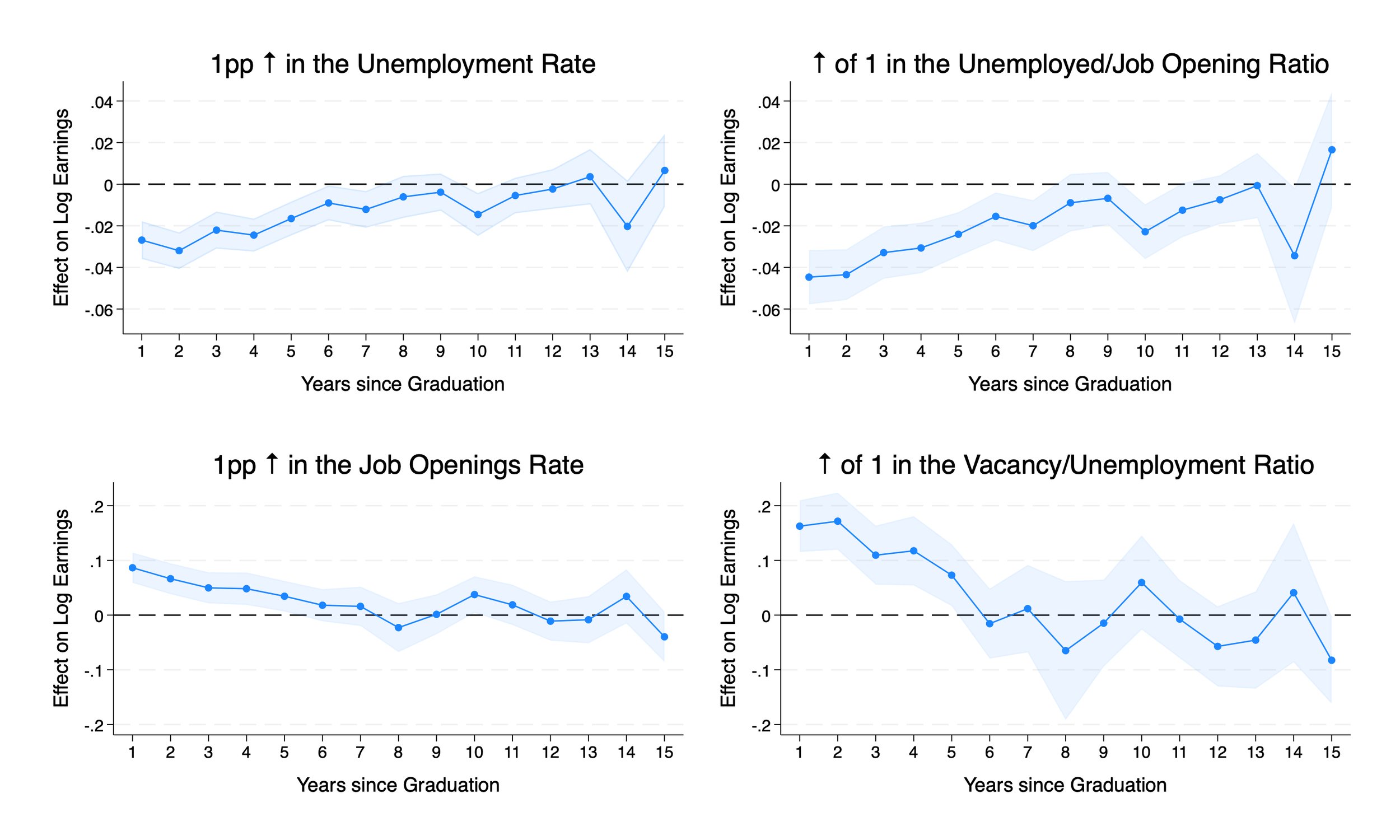Publications
Mask, J. (2023). Salary History Bans and Healing Scars from Past Recessions. Labour Economics, 84, p. 102408.
Abstract: In a recession, increased competition forces inexperienced job market entrants to accept lower wages than those who start their careers during an economic boom. Despite years of improvement in labor market conditions following a recession, a wage disparity, known as scarring, persists between these cohorts. Recently implemented Salary History Ban laws (SHBs) are intended to reduce wage disparities between advantaged and disadvantaged groups. In this study, I test how these laws affect a unique and often less salient disadvantaged group – scarred workers. For scarred workers who began their careers during a moderate-to-severe recession, or a five percentage point higher state unemployment rate, I find SHBs increase job mobility by 0.6%, hourly wages by 2.65%, and weekly earnings by 5% relative to cohorts who graduated in baseline labor market conditions. These estimates represent a substantial reduction in the original scarring effect and provide a broader understanding of the mechanisms behind both scarring and SHB laws.
Mask, J. (2020). Consequences of immigrating during a recession: Evidence from the US Refugee Resettlement program. IZA Journal of Development and Migration, 11(1), 2020:0021.
Abstract: Are there long-term labor consequences in migrating to the US during a recession? For most immigrants, credibly estimating this effect is difficult because of selective migration. Some immigrants may not move if economic conditions are not favorable. However, identification is possible for refugees as their arrival dates are exogenously determined through the US Refugee Resettlement program. A one percentage point increase in the arrival national unemployment rate reduces refugee wages by 1.98% and employment probability by 1.57 percentage points after 5 years.
Working Papers
How Increased Labor Demand at the Start of Your Career Can Improve Long Run Outcomes (2022)
Presented at the AEA/ASSA, Eastern Economic Association, and Midwest Economics Association conferences
Abstract: The literature has traditionally focused on the local unemployment rate to estimate how initial economic conditions affect long-run outcomes. Using Job Openings and Labor Turnover Survey, or JOLTS, State Estimates for job openings, hires, and separations along with Local Area Unemployment Statistics, I test how changes in other aggregate measures of labor market activity affect long run outcomes. I find that for every one point increase in the local unemployed-to-job-opening ratio, annual earnings are reduced by 4.45% and remain depressed for over 13 years. Conversely, I find that a one percentage point increase in the local job openings rate or a one point increase in the local vacancy/unemployment ratio, increases initial annual earnings by 8.18% and 17.16%, respectively, which persists for nearly 11 years. I similarly find a positive and persistent effect on annual earnings from other measures of labor market tightness like the job-to-job transition rate, quits rate, job finding rate, and the labor-leverage ratio.
Latest version available here.


